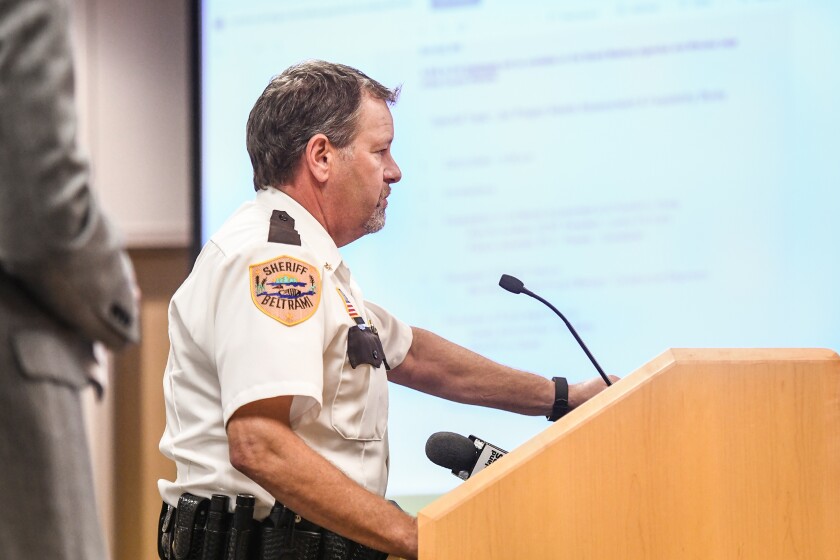BEMIDJI — During a special work session on Wednesday, Aug. 24, Justice Planners staff met with the Beltrami County Board of Commissioners to discuss their findings after completing the Beltrami County Jail Needs Assessment and Feasibility Study.
The county originally issued a request for proposal in December 2021 for the study, after the jail had been facing challenges throughout the years, including severe housing capacity limitations, an inability for the jail to meet Department of Corrections jail design standards and an increase in needs for mental health and chemical dependency resources.
ADVERTISEMENT
The jail, which opened in 1989, has undergone a couple of remodeling projects in the past — including one in 2004 which added a minimum security direct supervision unit, and another completed in 2015 which added a kitchen to meet capacity needs.
However, recent Minnesota DOC inspections revealed deteriorating conditions at the facility, noting the lack of storage space, a central control area, proper visitation spaces, staff training spaces, program spaces for inmates and more.
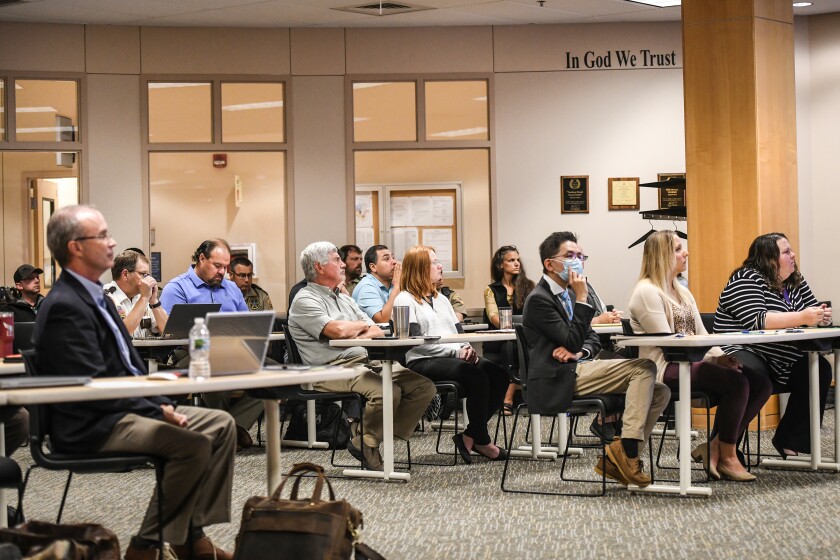
In 2018, the facility itself began to "debilitate at an alarming rate," according to Beltrami County Jail project milestones information. One DOC inspector paraphrased the facility as “aging 10 years in the last year.”
Due to these challenges, Justice Planners LLC was hired to conduct the study and has been collecting data on jail populations, jail bookings, inmate demographics and court proceedings, along with arrest, probation and mental health data for the past six months.
The current state
Patrick Jablonski, a planner/statistician with Justice Planners, noted that a key issue with the current detention center's size is that the overall jail population is rising.
“Some individuals who are held can be diverted from custody,” Jablonski said about the jail population, “but it’s frankly not enough for us to gain something where we can say ‘Hey, you actually need a smaller jail.’”
Based on Justice Planners predictors, the average length of an inmate’s stay and the average daily population of the jail will both likely increase in the next 30 years.
ADVERTISEMENT
Currently, the Beltrami County Jail has a bed capacity of 132 with an operational capacity of 118 inmates. In order to responsibly house the projected number of inmates the jail will have in about 30 years, Jablonski said the number of beds needed would be around 237.
“Internally, the jail needs space to be able to safely and responsibly manage the jail’s population — you can’t have every bed filled and then operate a safe and secure operation,” Jablonski explained. “You need space to allow for the ability to keep certain parts of the population separate from each other.”
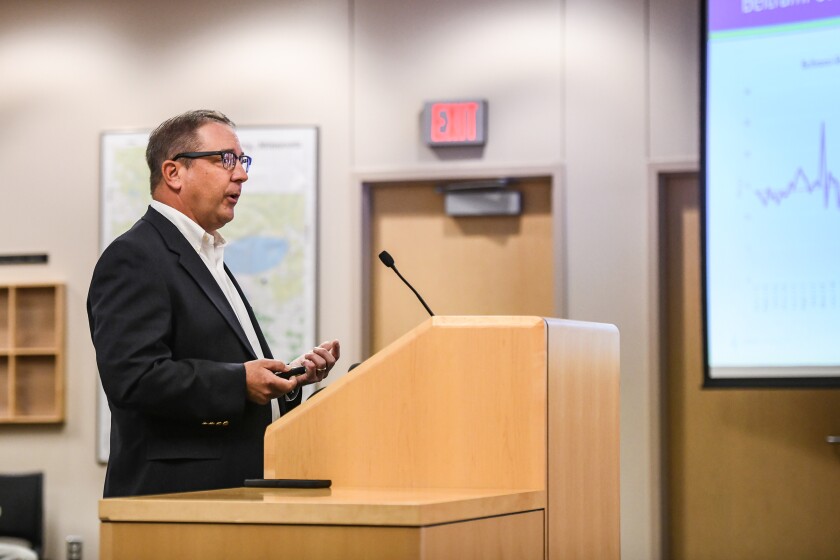
Jablonski expressed that, in addition to analyzing the space available at the jail, other concerns emerged during the study such as mental health and substance abuse issues experienced by inmates.
“Using the data we were provided, approximately 57% of the individuals who are booked have some form of involvement with drugs and alcohol,” Jablonski said. “When we cut through the data and we spent time on the ground here in February and talked to the stakeholders, the feeling was that the actual number is probably higher by a magnitude of maybe 10-15%.”
Along with substance abuse and chemical dependency, mental health needs were mentioned in almost all of the Justice Planners’ interviews with stakeholders and community members as one of the largest issues facing the criminal justice system.
“When we talked to the stakeholders, we were struck by the fact that there was near universal agreement among them that the jail should not function as a mental health facility,” Jablonski recalled. “It is not a mental health facility, and frankly the staff is not trained to function and operate a mental health facility.”
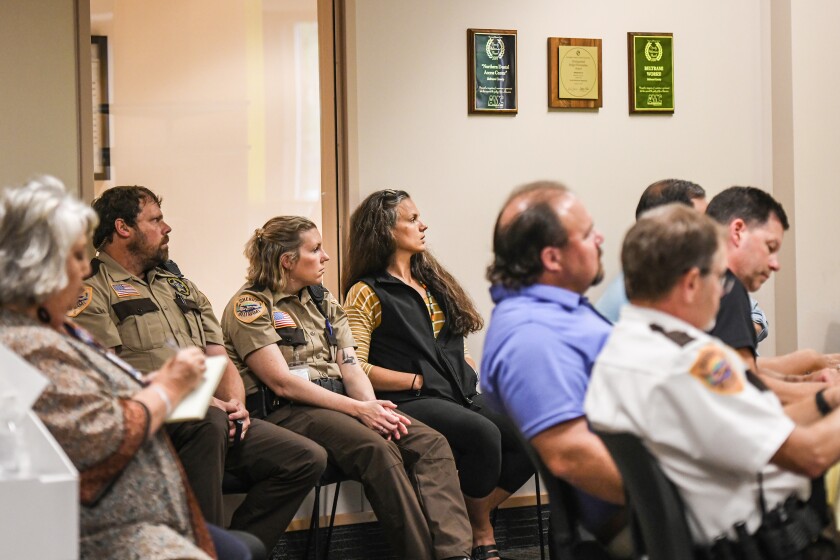
With substance abuse and mental health seen by the community as high-priority issues, Jablonski said they are important factors when it comes to making a decision on the future of the jail.
ADVERTISEMENT
“A significant portion of the individuals that are held by the Beltrami County Sheriff’s Office have mental health issues,” Jablonski said. “(During the presentation) we looked at chemical dependency as well. That has significant implications for managing the jail, and also planning what your options are in the future.”
Seven options
After looking at the challenges facing the current state of the Beltrami County Jail, Justice Planners was tasked with determining what options the county has moving forward.
Justice Planners President Alan Richardson discussed the pros and cons for each of the seven options, noting capital construction costs, potential effects on inmates and staff, the chance of inmate recidivism and effects on the community as a whole.
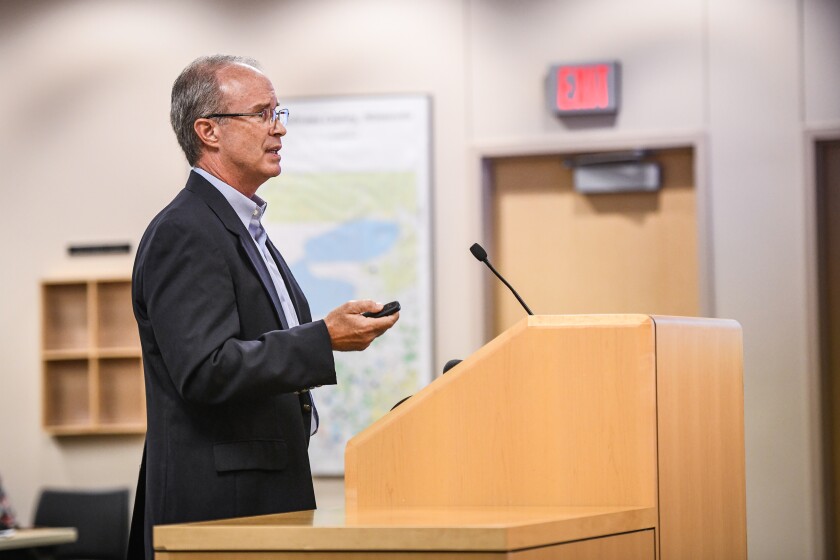
These options include:
Do nothing, an option that includes not taking any action and operating the jail as usual with no renovation, remodeling or restructuring.
Advantages: No capital construction costs.
Disadvantages: Safety concerns for staff and inmates won’t be addressed, growing jail populations would increase the number of inmates being housed out of county which would require more transport officers and vehicles needed, increase liability and risk during transport, and cause more local tax dollars being spent out of the county. Infrastructure will continue to deteriorate and be more expensive to maintain and staff training programs and space for inmate programs would not be addressed.
ADVERTISEMENT
Reduce the jail to a 36-hour holding facility, an option that includes reducing from a full-service jail facility to a 36-hour holding facility, and transporting inmates who don’t post bail to a different county after being held for 36 hours.
Advantages: No capital construction costs and would allow for a possible expansion of the booking center.
Disadvantages: Would not address the lack of program space for inmates and would increase the number of inmates being housed out of the county, which would require more transport officers and vehicles needed, increase liability and risk during transport and cause more local tax dollars to be spent out of the county.
Renovate the current detention center, an option that includes renovating the current existing detention center, but not expanding it.
Advantages: Could address some safety concerns for staff and inmates, could potentially add some program space for inmates and would allow for a renovation of the booking area.
Disadvantages: Would include capital construction costs, and would increase the number of inmates being housed out of the county, which would require more transport officers and vehicles needed, increase liability and risk during transport and cause more local tax dollars to be spent out of the county.
Expand the current detention center, an option that includes expanding the current detention center.
ADVERTISEMENT
Advantages: Would add the bed capacity to avoid transporting most inmates out of the county, reduce safety risks, local tax dollars would stay within the county and could add program space for inmates.
Disadvantages: Would include capital construction costs, and existing mechanical, electrical and plumbing system issues would have to be addressed.
Build a new detention center, an option that includes constructing an entirely new jail.
Advantages: County would be able to design a new facility layout, would add the bed capacity to avoid transporting most inmates out of the county, reduce safety risks, local tax dollars would stay within the county and could add program space for inmates.
Disadvantages: Would include capital construction costs, new facility would likely need a new site and wouldn't be adjacent to the courthouse.
Build a regional detention center, an option that includes building a regional detention center that would serve several counties, including Beltrami.
Advantages: Capital construction and operating costs would be offset between jurisdictions, inmate resources and programs would be addressed.
ADVERTISEMENT
Disadvantages: Would include capital construction costs, a new facility site would be required that wouldn’t be adjacent to the courthouse, and there isn't much information currently available for this option due to a lack of studies done with other jurisdictions.
Close the detention center, an option that includes shutting down the jail and solely operating a booking center.
Advantages: Low capital construction costs, and would still have the opportunity to remodel the booking center.
Disadvantages: Would not address staff training programs and program space for inmates, and would increase the number of inmates being housed out of the county, which would require more transport officers and vehicles needed, increase liability and risk during transport and cause more local tax dollars to be spent out of the county.
Going forward
Beltrami County Administrator Tom Barry discussed the importance of public input on the project, an aspect that will help the board gather residents’ opinions on how the county should move forward in making a decision.
“Finally, we’re at a point where we are collecting the data, analyzing the data and putting it out there for us to make the best decision possible for the community,” Barry said, addressing the board. “We want you to have as much input by the community and by others as possible, to help best inform you as to what our community members are thinking, what the data suggests and what the specialists are recommending.”

A public hearing regarding the feasibility study will be held at 5 p.m. on Sept. 22 in the County Board Room.
Until then, residents will be able to post feedback and opinions related to the study findings in the public comment portal at Comments submitted through the portal will be presented to the board for consideration.
The also contains information on the project, including a jail and justice system overview, a project timeline, and copies of the feasibility report and presentation.
For Beltrami County Sheriff Ernie Beitel, the process of receiving input from the public is a vital step in going forward with making a decision on the jail’s future.
“I want the public fully informed of what the implications are going to be. ... I really, truly, want to put this back on our people we serve, get their input, and get their advice and their direction,” Beitel said. “We need to all come together and make that decision moving forward.”
